Tornadoes are some of the most destructive and fascinating natural phenomena Mother Nature can produce! Given the fact that these phenomena can happen all over the world at any given time, it’s almost common sense that every person should know a few very important tornado safety tips. You might think that, like hurricanes, tornadoes also have special preferences when it comes to their place and time of birth. Well it’s not quite like that because these tubes of wind can start in any place in the world where there is flat, dry terrain.
[the_ad_placement id=”in-text-1-type-r”]There are indeed a few places where tornadoes love to play catch with people’s properties and sometimes lives. So if you don’t know yet if you live in (or nearby) a tornado area, you might want to check this list:
- Tornado Alley, a region in the Central USA which includes several states (Texas, Colorado, Kansas, Nebraska, Oklahoma, Arkansas, Illinois, Indiana, Missouri);
- Uruguay;
- Australia;
- United Kingdom;
- Japan;
- South Africa.
USA is the country where tornadoes happen more often and the area called Tornado Alley is where some of the most violent ones had happened over time. What’s even scarier is the fact that they don’t have a season; a tornado can form wherever and whenever the ideal conditions are met. The most relevant example is that there are about one thousand tornadoes every year and over 60 people are killed each year. Most of them don’t produce much damage and go away as fast as they took life.
The cycle of a tornado
We all know the funnel shape of a tornado but not so many of us know that this is actually a pretty violent storm of rotating air that starts from a thunderstorm at the ground. The rotating column of air contains winds that can go up to 300 mph. At this speed, the tornado sucks everything it meets in its swirl: houses, cars, debris, trees, people, and so on.
Some of the most violent tornadoes left behind damages worth billions of dollars. In order to be prepared for such a display of forces, you must understand how and why a column of rotating air can form and gain in power. This way you will understand better all the tornado safety rules.
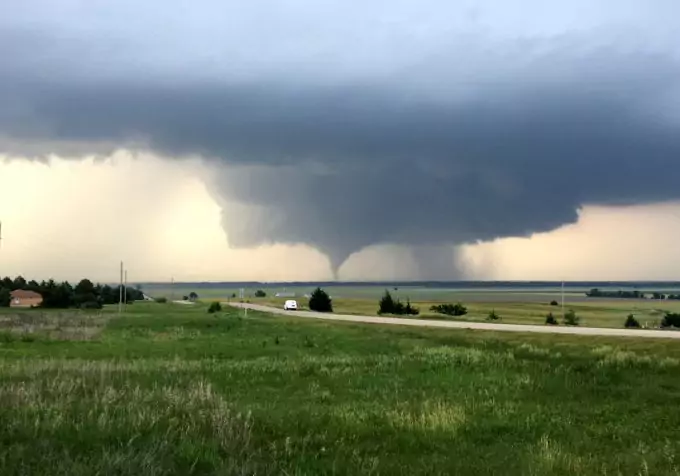
Most of them are formed from a simple thunderstorm at the ground. When a mass of moist, heavy air meets a mass of cool, dry air during a thunderstorm, they create instability in the atmosphere. The spinning effect (the funnel) is created by wind changing direction and speed in the lower atmosphere. At the beginning the spinning effect is in a horizontal plan but raising air changes the spin in the vertical plan allowing an area of rotation of 2 to 6 miles wide.
Even though it seems like the end of the world is happening in the first minutes of a tornado, it also passes pretty quickly. Tornadoes don’t have a long life; their lifetime is ranging from a few minutes to a few hours maximum. Scientists are still trying to determine exactly when and why a tornado dies but one thing is definite: even though they don’t last long they can be powerful enough to raise your house from the ground.
If you want to know more about tornadoes’ mechanics, take a look at our article on signs of a tornado.
Tornado safety rules that everyone should know
Even though it seems that God has a special problem with the central area of the USA you shouldn’t count on that. As we said in the beginning, a tornado only needs a few ideal conditions to be met. These phenomena can take place on land, on the shore, on the sea, close to a forest, in the winter, spring or summer without any extra notice.
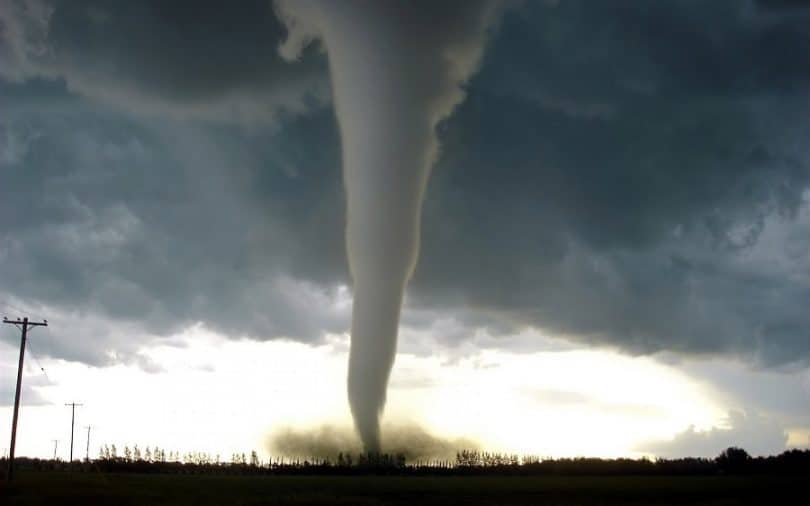
One of the most important tornado safety facts is that people who prepare in advance for this scenario know how to get through it without many damages or losses. If a tornado catches you off guard and you don’t know what actions are necessary, you may have a very scarring experience.
[the_ad_placement id=”in-text-2-type-r”]Preparation is the first safety tip:
- Get your family together and put a tornado safety plan in place: make sure everyone knows where the shelter is and how to get there. Also a tornado drill at least once a year can be very helpful and you can get some ideas from our article on tornado safety tips for kids.
- If you don’t have a shelter, basement or a room without windows where to take cover make a plan of your closest possible shelters: schools, hospitals, stores, storage rooms, bathrooms, and so on;
- Make sure everyone knows where you will meet after disaster (in case someone gets separated during the storm);
- Don’t try to open the windows in your house. The myth that the pressure will equalize is just a myth. A powerful tornado will blast all windows (opened or closed) into pieces. That’s why it’s very important to be in a room without windows.
- Prepare and emergency kit with food, fresh water, medicines and everything you might need in such a case. Store the kit in your shelter or someplace where it’s easy to reach. Make sure to check the supplies regularly and replace the ones that are perishable. It’s important to make the kit for at least 72 hours and prepare one for each member of the family – we have a great article on kit ideas that might be of help.
- Make a list of important information (emergency phone numbers, family phone numbers, anything else you consider important) and give a copy to every member of your family.
- Make sure your emergency kit includes fresh batteries, a weather radio and maybe a battery operated TV. The weather radio is of maxim importance so take a look at our list of best emergency radios to own.
Where will you be when the tornado strikes?
Even though very powerful tornadoes that can blow out an entire house and its occupants are pretty rare, you need to know how to take cover according to the building and place:
- If you remain in the house and there is no basement, try to look for additional protection under large, solid pieces of furniture. This way you will be protected from any flying debris or other objects. At high speed even a patio chair can be fatal.
- If you have a basement or a tornado shelter, make sure you get there in time (with the emergency kit). Lock all the doors and wait for the wrath to pass. Watch the news and weather on TV or radio to make sure you know when it’s safe to come out. If you don’t have a shelter and you want to build one, take a look at our step-by-step instructions
- Stay away from cars and mobile homes. They can be easily sucked in the swirl and thrown miles away. You don’t want to be inside when the tornado spits out the car.
- If the tornado gets you outside and there is no time to look for shelter, look for the lowest place and lie flat, with your face down, protecting your head with your arms. Wait in this position until the storm passes and try to stay as far as possible from trees and other heavy objects the tornado might snatch and throw onto you.
- If you live in an apartment at the superior levels you must look for shelter at the inferior floors. If there is no time to get there, try to get in the hallway and lie flat with your face down.
- If you happen to be in a school then all you have to do is follow the drill. Public institutions usually have people prepared for all types of scenarios.
- If you are in a building office, with large windows or in a skyscraper look for an area without windows and crouch down and cover your head.
As you can see, the main idea is: wherever you are during a tornado, always stay away from windows and look for a low, enclosed place where the wind can’t reach you.
Other actions and safety tips for a tornado:
- Don’t try to outrun the tornado, even if you are in a fast car. The recommended action here is to leave the car and look for shelter in a depression. If you think that leaving the car is more dangerous than staying inside, park the car, put your seatbelt on and lower your head under the window level.
- Big buildings with large rooms and poorly supported roofs are to be avoided. Churches, schools, hospitals, shopping malls and other buildings likewise usually have a special area where people can look for shelter.
- Avoid sitting in the corner during a tornado. Always try to sit in the center of the room. Corners attract debris and you might get injured if the wind manages to get inside the room.
If you have a disability that prevents you from moving fast enough, then you have to be extra careful in planning your escape route. Still, given the fact that tornadoes are fast and sometimes hard to predict, it’s possible that you find yourself right in its way without any help.
In this case, there are a few steps you have to follow according to the condition you are in:
- If you are in a wheelchair, make sure to get away from the windows and move in the safest room of the house. It has to be small, without windows and a solid door. Try to cover your body and head with anything you can (pillows, blankets, your hands). This way, in case the wind brings in debris, you won’t get hurt too bad.
- If you are in bed and can’t move at all, try to cover yourself with blankets and pillows. Always make sure that your head is protected. If you can, try to cover the bed with something solid like a board.
- If the tornado gets you outside and you can’t run from it, try to lie down and cover your head with both your arms.
Tornado watch vs. tornado warning
When living in an area called Tornado Alley (or anywhere else in the world where tornadoes are frequent) you must know the difference between Tornado Watch and Tornado Warning:
- A tornado watch means that there may be a tornado in your area. Now it’s the best time to review your supplies and gather the family members to talk about the tornado plan you put together. Talk to everyone and announce your neighbors to make sure they got the news. Make sure everyone knows what to do and where the closest shelter is.
- A tornado warning means that the tornado was already spotted and that it’s coming. A warning means imminent tornado danger and it’s time to get into the shelter as fast as possible. As soon as you hear that there is a tornado warning, your plan needs to transform into action!
Now that you know the difference, between watch and warning you are better prepared to face the swirling winds.
[the_ad_placement id=”in-text-3-type-r”]Make sure that you and your family members understand that safety tips for a tornado are not just for boring afternoons when you have nothing else to do.
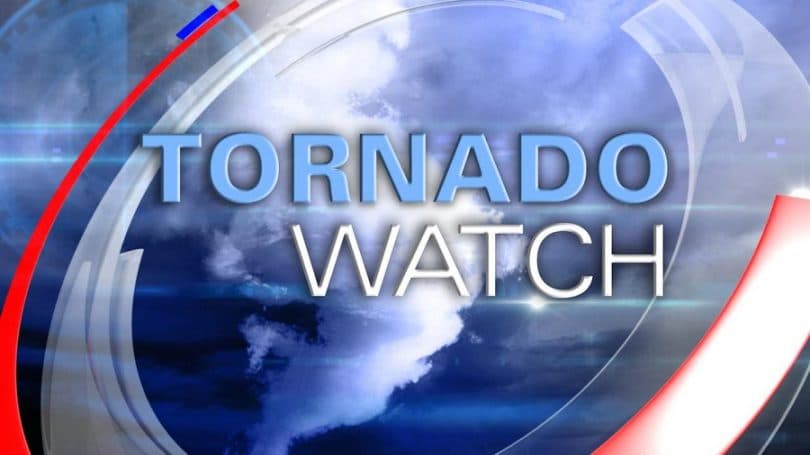
Even though they might not seem like much in the beginning, tornadoes can become real monsters in a very short period of time.
Top 8 myths about tornado
Tornadoes are impressive outbursts of wind, rain, thunderstorms, power and speed. They can be as weak as a normal wind or as destructive as the worst hurricane ever. That’s why people are fascinated by their behavior.
For centuries, scientists tried to explain these rotating winds and everyone tried to come with a plausible explanation. As the science advanced, so did our knowledge about weather and its phenomena. Still, some pieces of information remained and this is why today, we got the tornado myths we are about to discuss:
- During a tornado you have to open all your windows to equalize the pressure – well, if the tornado is powerful enough you may not have what pressure to equalize. They usually start with ripping off the roof and if this is strong enough you might get a truck in the living room. Windows usually get smashed first regardless of the fact that they are opened or closed.
- A tornado wouldn’t hit a big city, they usually go in the rural areas – if you think a tornado is intimidated by flashy lights and tall buildings, you are terribly mistaken. Cities like Miami, Dallas, Salt Lake City and others have been hit several times. Also, a tornado can do a lot more damage in the city as it has more things to pick up and toss around.
- I am safe in the mountains, no tornadoes here – as we already discussed, a tornado will happen wherever and whenever the ideal conditions are met. Even though mountains don’t have as many tornadoes, they happen here too.
- It is believed that tornadoes don’t cross rivers – this myth is a bit absurd, what, is the tornado afraid to wet its feet? There have been recorded many tornadoes that jumped big rivers like the Mississippi and continued their destructive path for miles.
- You are protected under a bridge or a freeway overpass – this myth actually sound pretty good. Everyone recommends that you get under something big, to protect you from the storm. Still, a bridge is too big. The wind usually accelerates under a bridge or a freeway overpass and it can pick up cars that are parked underneath it. Bridges are not a safe place to be under during a tornado.
- A fast car can outrun a tornado – this may also seem logical but remember: tornadoes are nature’s fury. They are fast and they can shift direction without any warning.
- Big buildings made of bricks and stones can withhold a tornado – yes, a medium one. Extremely violent tornadoes can pick up cars and carry them for miles. They are extremely dangerous because of the objects they toss at incredible speed. If a car is tossed to a brick wall, the wall is most likely to fall.
- If a tornado finds you outside, find a deep buried pole and tie yourself with a rope to it – well, this is more like a Final Destination scenario. If the wind is violent, you will not get out of this adventure alive. You will be sliced by the rope and banged by the wind for sure.
These myths are important for people who want to learn the accurate version of the tornado safety rules. It is important to know that these won’t work and why, so you can explain to anyone else who believes they are true. When your life depends on tornado safety facts and rules make sure the source is reliable and accredited. Always talk to authorities and organizations that cover this kind of natural disasters.
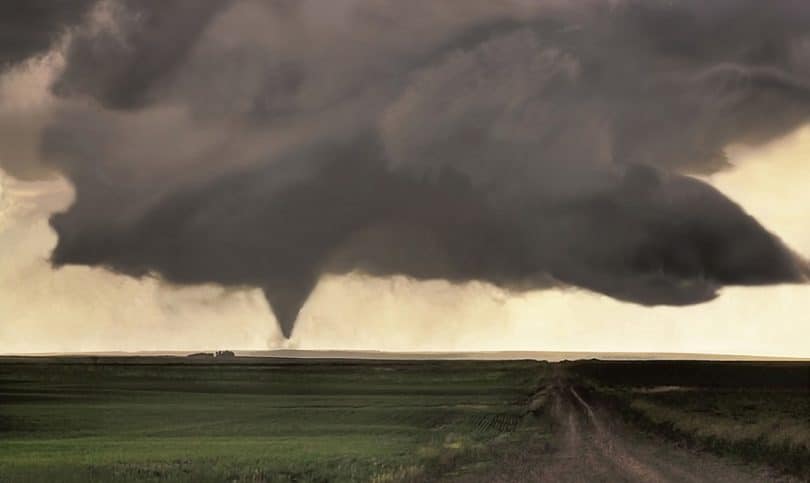
The final conclusion regarding safety tips for a tornado is that you always need to be prepared. You don’t have to live on the Tornado Alley to know what to do in case a funnel appears at the horizon. Remember that tornadoes also strike in the mountains and in big cities protected by rivers. There have been cases of people and fragile objects that were transported by a tornado without getting any injuries or damages but you don’t want your family safety to be based on chance, do you?



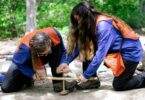
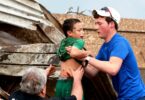

Great information. I think being prepared for a tornado is the best way to avoid a lot of damages. It is a scary experience, but one can survive it. Although one cannot be entirely immune to a storm, it makes sense to me to have a plan and stay in safe places, like hospitals and schools, or the basement of the house.
Tornados frighten me. We were on a family vacation in Florida once when a tornado alert was announced on TV and radio. I got scared because I realized I know nothing about this type of catastrophe . Learning more is always good, and this article will help many who deal with these hardships on a daily basis.
I enjoyed the myths-to-bust section of this article. It’s time we drop them because more often than not, they pacify us and in this case, may even lead us to more danger. I’ve also heard that tornadoes usually occur between March and August, and between 3pm and 9pm. Is this scientific or just another myth? A little unnerving to have a tornado at night.
There are myths about tornados, but it is always good to separate tornado myths from tornado facts.